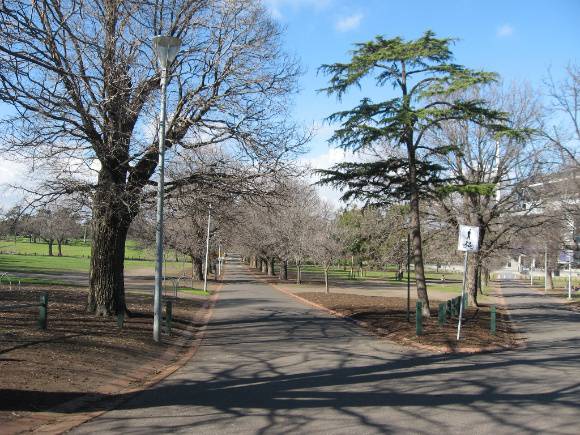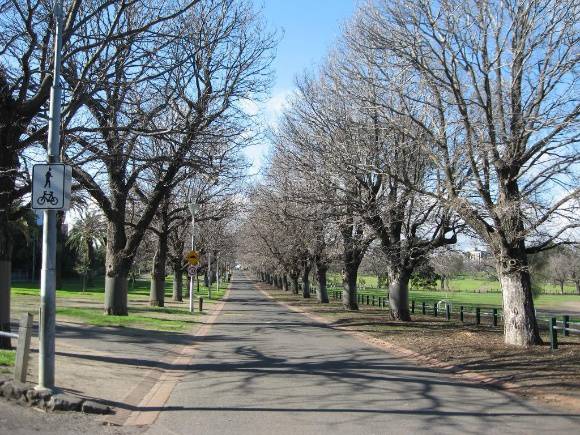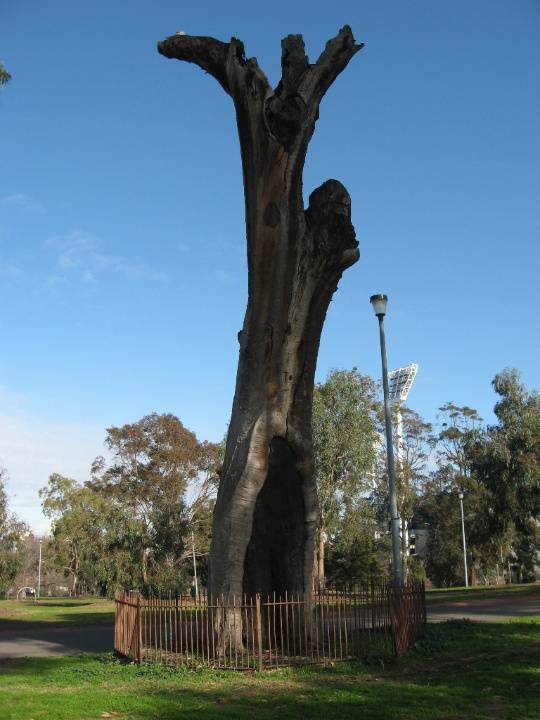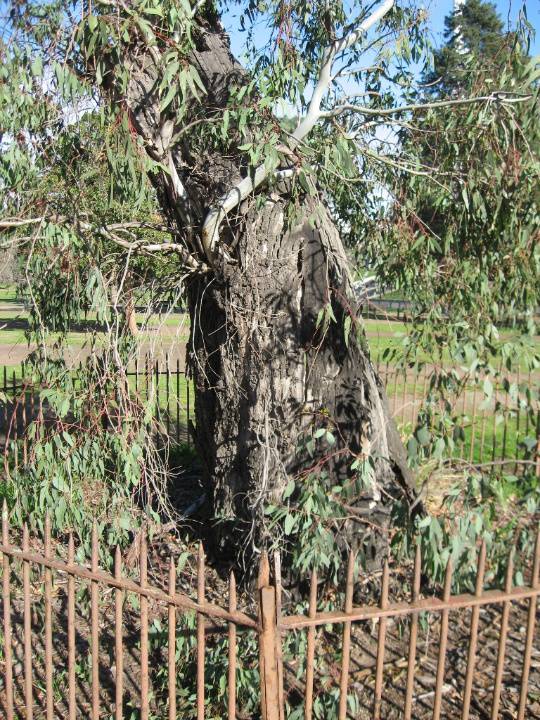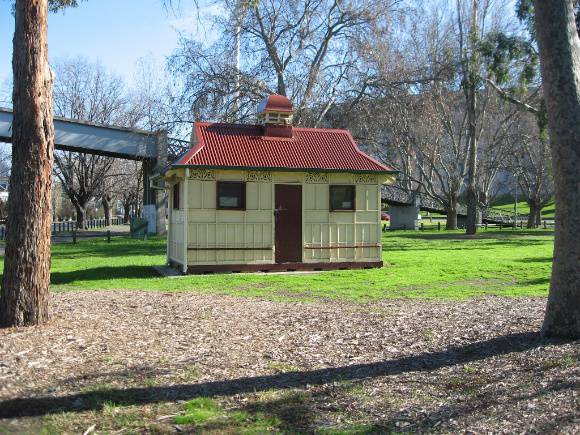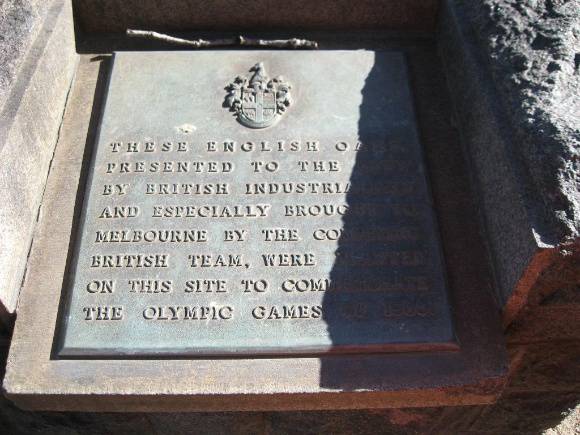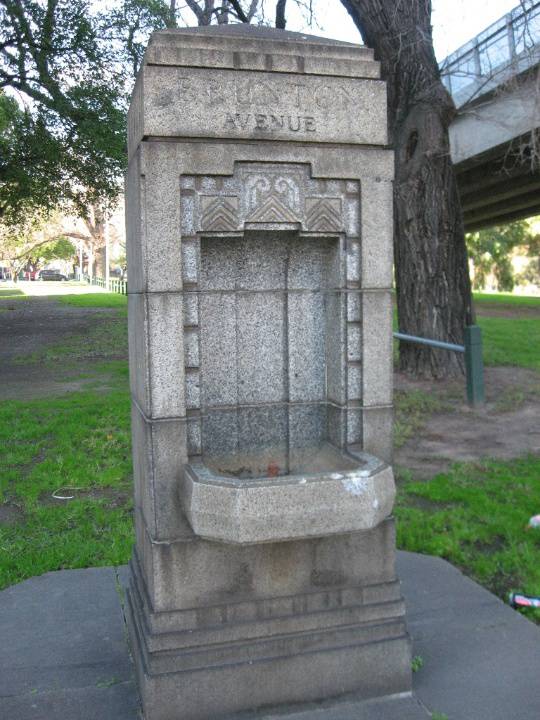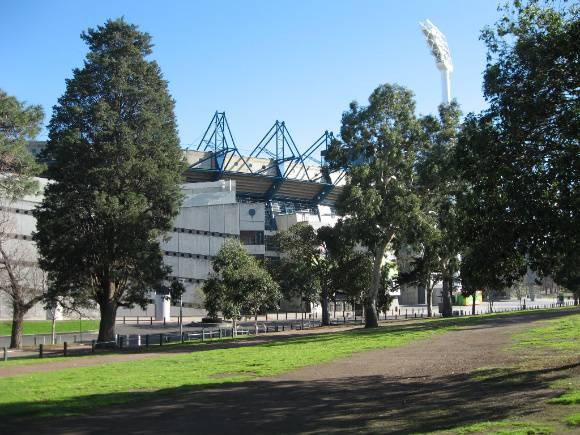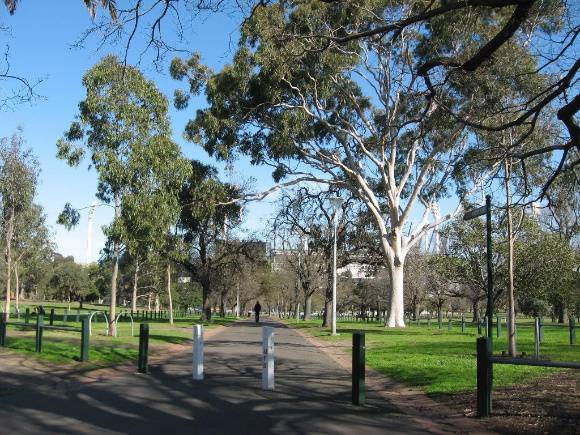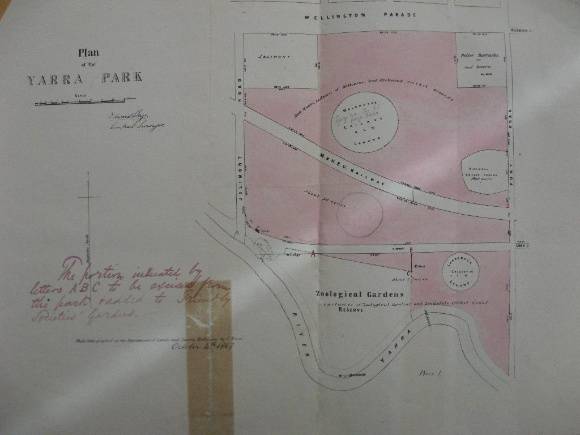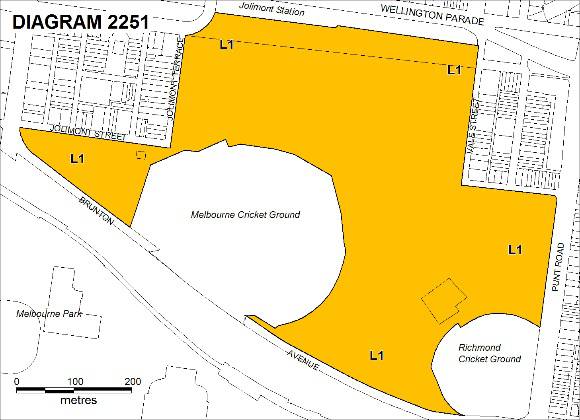| Back to search results » | Back to search page » |
|
YARRA PARK
Statement of Significance
What is significant?
Yarra Park, East Melbourne is bordered by the southern boundary of
the railway reserve adjacent to Wellington Parade, Vale Street, Punt
Road, Brunton Avenue, Jolimont Street and Jolimont Terrace. This site
is part of the traditional land of the Wurundjeri people. Yarra Park was part of a proposal to surround the city of Melbourne
with a ring of parks and gardens. This is largely credited to Charles
La Trobe, who was appointed to govern the Port Phillip District in
1839, and responded to instructions to make sufficient land available
for public purposes. The result was an inner ring of gardens,
including the Fitzroy, Treasury, Parliament, Alexandra and Royal
Botanic Gardens and the Domain, and an outer ring including Yarra,
Albert, Fawkner, Princes and Royal Parks. The former were generally
designed spaces, intended for passive recreation, while the latter
were developed in a less sophisticated manner for both active and
passive recreation. Yarra Park developed on the Government Paddock which was east of the
adjacent Police Magistrate's Paddock. This land, of some 157 acres,
was recommended for reservation in 1862. It became known as Richmond
Park before being temporarily reserved and renamed Yarra Park in 1867.
It was not permanently reserved until 1873. A network of paths developed through Yarra Park, along desire lines.
The first of these, from Punt Road to Wellington Street, were
established as early as 1852. These grew in complexity as north-south
pathways were developed, as the sporting venues grew in popularity and
the railway stations were established at the park's boundaries. These
pathways generally continue to be used. Yarra Park has been used for
the provision of parking for sporting events since the 1920s and
continues to be used in this manner. The place has associations with a number of people and groups of
importance in Victoria's cultural history such as the mounted police
force, Police Magistrate William Lonsdale, Governor Charles La Trobe,
surveyor Robert Hoddle, and Clement Hodgkinson, who designed the
park's plantings and pathways in 1873. Yarra Park contains a mixture of open space with turf and trees.
Avenues of trees, probably from the late nineteenth century, line many
of the paths. Significant plantings include Chir Pine (Pinus
roxburghii) and remnant indigenous trees, in particular two
scarred River Red Gums (Eucalyptus camaldulensis). Structures on the site include an electrical substation (1938), two
drinking fountains at either end of Brunton Avenue (1938) and a
commemorative Olympic plaque in Brunton Avenue (1959).
How is it significant?
Yarra Park is of historical significance to the State of Victoria.
Why is it significant?
Yarra Park is historically significant as part of the system of parks
that Governor Charles La Trobe envisaged surrounding Melbourne. His
vision was to establish a city set within public open space,
reflecting nineteenth century planning mores. The park has further
significance as it is the result of the first application in Victoria
of the reservation of a large open area for public/government use. It
was set aside as a reserve within Robert Hoddle's first Town Reserve
Plan for Melbourne in 1837 noted as 'Government Reserve' and then
shown in more detail in Hoddle's 1843 Plan of North and South
Melbourne as 'Government Paddock'. Yarra Park is historically significant as the 'village green' for
Melbourne and for its role in the development of Australian Rules
Football, being the place where the earliest games were played in 1858. The park is an important Aboriginal ceremonial, camping and contact
site that retains evidence of Aboriginal use, such as the scarred
river red gums. Yarra Park has significant historical associations not only with
Governor La Trobe but also with early Police Magistrate William
Lonsdale, the mounted police force and Clement Hodgkinson, whose
design allowed for active and passive recreation.
Group
Parks, Gardens and Trees
Category
Park or Garden Precinct


